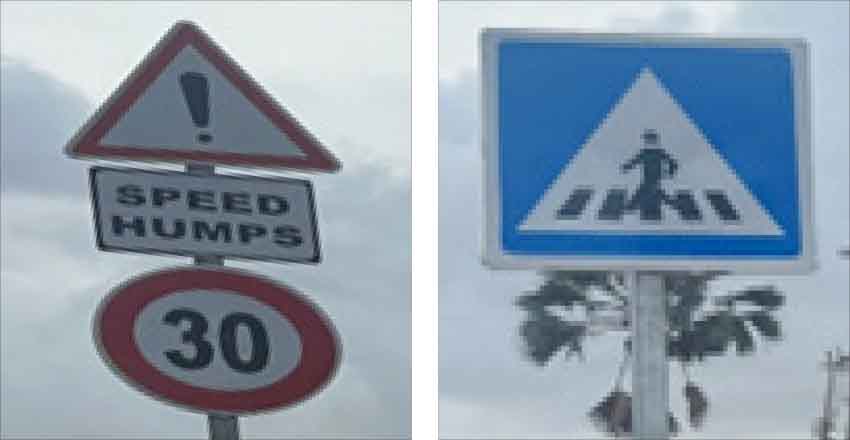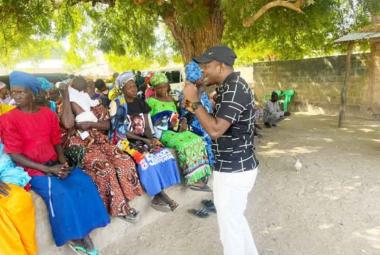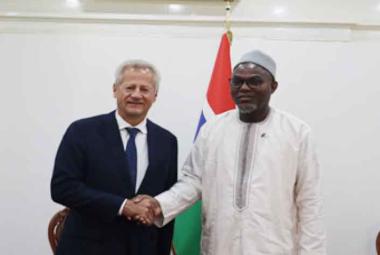By Adam Colley
In the fast-paced world of cars, bikes, and pedestrians, traffic signs are the unsung heroes of the road. They speak a universal language, guiding us through intersections, warning us of hazards, and ensuring smooth travel. Often ignored until something goes wrong, these simple signs hold the power to prevent accidents and save lives. Without them, the road would be a place of uncertainty and danger. But what would happen if we truly understood their vital role in keeping our journeys safe? The Gambia is one of the countries with high rate of road traffic accidents. Reports indicate that from 2018 to 2023 a total of 6,630 accidents occurred, claiming a total of 969 lives. This translates to an average of 1,105 accidents and 161 deaths every year for the past six years.
The accident rate in The Gambia has historically been high, primarily due to a combination of factors such as poor road conditions, limited traffic enforcement, lack of driver awareness, and insufficient signage. The newly constructed OIC/ Bertil Harding Road has had its share of road accidents even while it was being constructed. However, recently there has been a mass installation of traffic signs along the new road. In this interview, The Gambia Daily finds out from the authorities the motivation for the road signs, their impact and potential in preventing or mitigating road traffic accidents. Anthony Keita, senior operations and safety manager at the National Road Authority, said traffic signs are very important because they provide the necessary information and warn motorists of potential dangers on the road ahead. “They are crucial in keeping drivers and pedestrians safe on our roads. These signs help regulate traffic flow, indicate hazards, and communicate the rules of the traffic on the roads thereby facilitate safe, efficient movement and avert conflict among road users,” he asserted
He gave examples of warning signs such as sharp-bend ahead, pedestrian crossing and speed bump ahead; saying these notify drivers to adjust their speedy thereby reduce the chances of accidents and injuries. “Rate of road accidents in The Gambia is very alarming and should be everybody’s business,” Mr Keita cautioned. He went on: “Most of these accidents are due to several factors like inadequate road infrastructure, lack of adherence to rules, obsolete traffic laws, and limited awareness of road safety measures. Enhancing traffic monuments and promoting road safety education are critical for addressing this issue”.
The NRA Safety Manager informed that currently there is a road safety awareness campaign on the Bertil Harding Highway. The awareness raising activities, he highlighted include committee workshops, educational programmes in schools, distribution of information materials among drivers, partnership with the police, transport union and other key stakeholders. “The main purpose is to teach traffic signs and raise awareness of road safety and complaints among road users to promote traffic safety. Such efforts can help promote a culture of safety and responsibility on the road eventually resulting in decreasing accidents,” Keita asserted.
Alieu Bah, a driver shared his impression with the traffic signs and their significance. He believes that traffic signs can prevent accidents “because they notify drivers of directions on the road and guide them when driving. For example, it shows drivers speed limit, stop signs, and pedestrian crossing. When drivers obey traffic signs, it limits accidents on the road, especially on dangerous roads,” he stated. Mr Bah observed that accidents have been limited on the Bertil Harding Highway since the installations of road signs.
Sheriff Ceesay, also a driver, observed that the main challenge of drivers and pedestrians is limited or lack of understanding of the meanings the traffic signs. For example, some drivers and pedestrians do not understand the meaning or essence of the zebra crossing signs that have been recently installed, thereby endangering the lives of pedestrians. He also mentioned traffic indiscipline as another cause of accidents. “Obeying traffic rules, following traffic signs and adhering to police traffic advice will limit road accidents,” Mr Ceesay said. The road signs show drivers how to give way to other drivers among other things. For example, drivers had limited understanding of the newly constructed roundabout on the OIC road and it caused serious traffic accidents and congestion before the installation of traffic signs showing the need to give way to traffic coming from the left.







